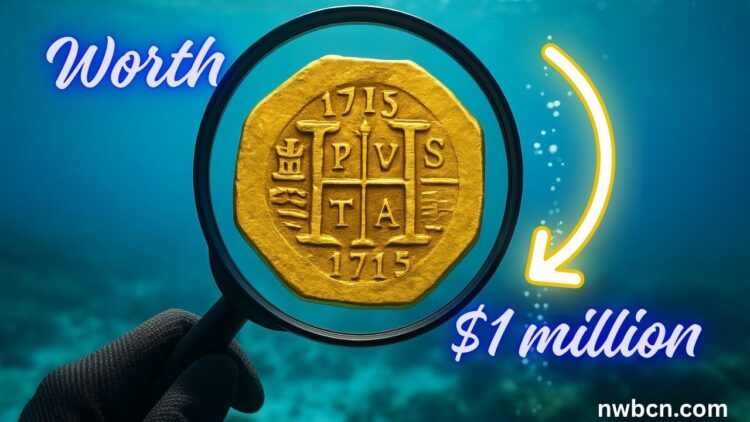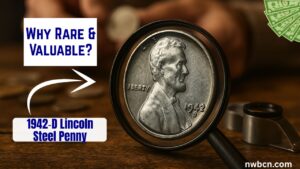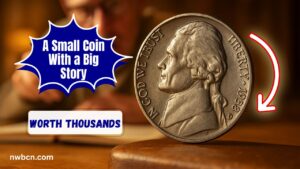The 1715 Spanish Fleet, struck by a hurricane on the beach coast of Florida on July 31, 1715, carried vast quantities of gold and silver to Spain. Eleven of its twelve ships sank, burying generations of treasure under the sea.
Over three centuries later, modern salvage efforts continue to recover gold escudos and doubloons, including rare specimens recently valued at over $1 million.
These coins are, minted primarily in Mexico City, Lima, and Bogota, provide a direct link to the Spanish Empire’s colonial wealth.
Their survival under salt water and sand adds to their allure, making them among the most coveted items of shipwreck recovery and numismatics today.
Recent Discoveries and Their Significance
2025 Salvage Finds
- June–July 2025: Captain Mike Perna and his vessel MV Mighty Mo recovered two 1714–1715 Mexico City 8 escudos, including a “GRAT” variety considered highly rare. Both coins show shipwreck damage and stress cracks on the rim.
- May–June 2024: The team aboard Lilly May recovered over 214 silver coins—some of which fit the classic pieces-of-eight mold; these finds complement the gold coin efforts.
2024 Law Enforcement Recovery
- November 2024: Florida authorities recovered 37 stolen gold coins—part of the 2015 haul salvaged by the Schmitt family. The coins were valued at over $1 million, with one unique 1709 error piece.
Auction Record Breakers
- 2024: A rare 1715MO Mexico 8-escudos graded NGC MS68 fetched €756,000 (~$809,000), smashing previous records.
What Makes These Gold Coins So Valuable?
- Shipwreck Provenance
- Coins with verified origin from the 1715 Fleet carry unparalleled historical weight and authenticity, boosting their collector value.
- Gold Content & Minting
- Denominations: 1-, 2-, 4-, and 8-escudos
- Composed of .900 fine gold, weighing up to ~27 g for an 8 escudo.
- Mint origins (COA) like Mexico City, Lima, and Bogotá diversify their rarity profile.
- Exceptional Survival & Condition
- Despite centuries underwater, many are remarkably well-preserved with original strike details, while showing aged charm such as stress cracks, spot toning, and patina—elements that enhance their authenticity.
- Scarcity & Auction Rarity
- Only a few high-grade coins survive, and even fewer reach auction. Records like MS68 for 8 escudos are rare, and “Royal” presentation coins are exceedingly scarce.
Significant 1715 Fleet Gold Coin Recoveries & Auction Results
| Year | Type & Mint | Grade/Condition | Price/Value | Context |
|---|---|---|---|---|
| 2024 | 8 escudos, Mexico City | NGC MS68 | €756,000 (~$809,000) | Beach find by couple, sold in Madrid |
| 2024 | Stolen gold coins | Mixed | > $1,000,000 total | 37 coins recovered & returned |
| 2025 | 8 escudos “GRAT” (1714) | Shipwreck condition | TBD (inspected, market-ready) | Latest find by Perna team |
| 2015 | 350+ gold coins (various) | Mix: Royals & escudos | $4.5 million haul | Salvaged on 300th sinking anniversary |
How They Are Recovered and Sold
Salvage Operations
- Firms like 1715 Fleet – Queens Jewels, LLC, now led by Brent Brisben, manage court-sanctioned salvage of the wreck sites.
- Salvage vessels (M/V Capitana, M/V Mighty Mo) comb ocean floor mapping via sonar, submersibles, and divers.
- Coins surface during dives or after storms churn the seabed, often in clusters with other artefacts.
Authentication & Grading
- Found coins undergo desalting and conservation before certification by NGC or PCGS.
- Grading preserves shipwreck provenance and suits high-level auction placement.
Auction & Private Sales
- Rare coins attract attention from:
- International auction houses (e.g., Jesús Vico in Madrid)
- U.S. firms like Heritage and Stack’s Bowers
- Private dealers specialising in Colonial-era gold
Why Collectors Are Riveted
- Historical cachet: These coins tell a story of empire, disaster, piracy, and salvage.
- Unique aesthetics: Handmade, irregular shapes exhibit individuality unseen in modern minted coins.
- Cross-collector appeal: Suitable for investors (gold content), historians (shipwreck context), and numismatists.
Preserving Shipwreck Coin Value
- Maintain provenance documentation, including marine recovery records and court salvage rulings.
- Avoid polishing or cleaning—natural patina confirms authenticity.
- Keep coins in graded slabs that mention “1715 Fleet pedigree”.
- Store in a secure, climate-controlled safe with documentation and insurance.
It has been almost three hundred years since the 1715 Spanish Fleet gold coins were discovered. They have been underwater and continue to captivate with their historical significance, limited survival, and high auction prices, like the €756,000 8-escudos from 2024.
As long as salvage operations continue, more treasures may be uncovered. Each discovery holds immense value, monetarily and culturally.
Their significance lies not just in their gold content but in the epic story they represent: empire, disaster, salvage, and rediscovery.
FAQs
Q1: What makes a recovered 1715 Fleet coin more valuable than melted gold?
It’s the shipwreck provenance, documented recovery, historical context, and numismatic rarity, not just the gold content.
Q2: Are all 1715 Fleet coins from the same mint?
No. They originate from various Spanish mints: Mexico City, Lima, Bogot, and occasionally Potosí. Some rare varieties, such as the “GRAT” die, are incredibly scarce.
Q3: How much of the original treasure remains to be found?
While over 300 gold coins have been recovered since 2015, including 350 in 2015 alone, salvage operations continue. Silver coins are still being found year by year. The wreck field is extensive, so more may still await recovery.




